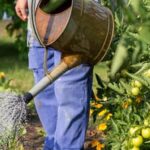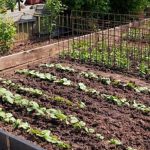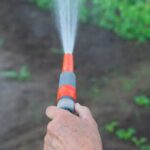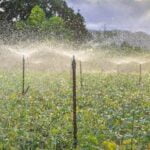Winter vegetable gardening can be a worthwhile endeavor, offering fresh produce, cost savings, and increased food security. By growing your own vegetables during the winter months, you not only have access to nutritious and flavorful produce but also save money on grocery bills. Additionally, having a winter vegetable garden provides a sense of food security as it allows you to rely less on external sources for your food supply.
When it comes to choosing the right winter vegetables for your garden, it is important to consider the specific needs of each plant and how well they thrive in colder temperatures. Vegetables like kale, spinach, broccoli, Brussels sprouts, and more are excellent choices for winter gardening. However, it is essential to take into consideration your region’s climate and the available growing space before selecting which winter vegetables to grow.
To ensure successful winter gardening, proper soil preparation plays a crucial role. Enhancing soil fertility, improving drainage, and adjusting pH levels are key factors in creating an optimal environment for your plants. Techniques such as mulching and composting can provide additional nutrients and insulation during the colder months. Taking the time to prepare the soil adequately will greatly contribute to the overall health and productivity of your winter vegetable garden.
Overall, with the right knowledge and techniques in place, winter vegetable gardening can be a rewarding experience that provides fresh produce throughout the year. Whether you are new to gardening or an experienced green thumb, embracing this practice not only offers numerous benefits but also allows you to connect with nature and enjoy the satisfaction of nurturing your own thriving garden.
Choosing the Right Winter Vegetables for Your Garden
When it comes to winter vegetable gardening, choosing the right crops is crucial for a successful harvest. While many plants struggle in colder temperatures, there are several winter vegetables that thrive in these conditions. By selecting the right vegetables for your garden, you can enjoy fresh produce even during the coldest months of the year.
Winter Vegetables That Thrive in Colder Temperatures
Some of the most popular winter vegetables include kale, spinach, broccoli, Brussels sprouts, and cauliflower. These crops are known for their ability to tolerate low temperatures and even enhance their flavor as the weather gets colder. Additionally, root vegetables like carrots, turnips, and beets also make excellent choices for winter gardening.
When choosing which winter vegetables to grow, consider your region’s climate and frost dates. Different varieties of each vegetable have different levels of cold tolerance and may perform better or worse depending on your specific location. Researching which varieties perform well in your area is key to a successful winter vegetable garden.
Considering Climate and Available Space
In addition to your climate, it’s important to consider the available growing space when choosing winter vegetables. Some plants require more room to sprawl or have deeper root systems that need ample space to develop. Take note of what areas of your garden receive the most sunlight or are better protected from harsh winds. This information will help you determine which crops will thrive in those specific locations.
If you have limited space or want to maximize yield in a small area, consider vertical gardening techniques such as trellising or using containers with climbing plants like peas or beans. Utilizing raised beds can also provide better control over soil conditions and drainage.
By carefully selecting the right winter vegetables for your garden based on climate and available space, you’ll increase your chances of a bountiful harvest throughout the winter season.
Preparing the Soil for Winter Vegetable Gardening
When it comes to winter vegetable gardening, one of the most crucial steps is preparing the soil. Proper soil preparation sets the foundation for healthy plant growth and a successful harvest. Here are some tips and techniques to ensure that your soil is ready for winter vegetable gardening:
- Assess Soil Fertility: Before planting your winter vegetables, it’s important to assess the fertility of your soil. Conduct a soil test to determine its nutrient levels and pH balance. Based on the results, add organic matter or specific fertilizers to enhance fertility and bring the pH to an optimal range for your chosen vegetables.
- Improve Drainage: Adequate drainage is vital during colder months when excess moisture can cause root rot or other issues. If you have heavy clay soil, amend it with organic matter such as compost or well-rotted manure to improve drainage and prevent waterlogging.
- Mulching and Composting: Mulching serves multiple purposes in winter vegetable gardening. It helps regulate soil temperature, conserves moisture, suppresses weeds, and adds organic matter as it decomposes. Apply a layer of mulch around your plants, leaving space near their stems for air circulation. Additionally, consider starting a compost pile or using compost bins to create nutrient-rich compost that can be added to your soil in preparation for future planting seasons.
To summarize:
- Assess soil fertility through a soil test and amend if necessary.
- Improve drainage by adding organic matter.
- Utilize mulch to regulate temperature and conserve moisture.
- Start a compost pile or use compost bins to create nutrient-rich compost.
By taking these steps to prepare your soil properly, you are giving your winter vegetables the best possible chance at thriving throughout the season. With fertile, well-drained soil enriched with organic matter, you will be well on your way towards a bountiful winter harvest.
Extending the Growing Season with Cold Frames and Row Covers
When it comes to winter vegetable gardening, one of the biggest challenges is protecting your plants from harsh weather conditions. However, there are effective solutions that can help extend the growing season and provide a favorable environment for your crops. Two popular methods for achieving this are using cold frames and row covers.
Cold frames are essentially mini greenhouses that capture sunlight and retain heat, creating a warm microclimate for your plants. They consist of a sturdy frame covered with transparent material such as glass or plastic. The transparent cover allows sunlight to penetrate while trapping heat inside, effectively shielding your plants from cold temperatures and frost.
To build a cold frame, start by constructing a rectangular frame using wood or PVC pipes. Attach the transparent material securely on top, ensuring that it can be easily opened for ventilation during warmer days. Ideally, position the cold frame in an area that receives maximum sunlight exposure throughout the day.
Row covers, on the other hand, are lightweight fabric sheets or permeable plastic covers placed directly over rows of crops. They act as a barrier against wind, frost, and even some pests while still allowing air and water to circulate freely. Row covers come in different weights or thicknesses depending on their intended purpose – from light floating row covers that offer minimal protection to heavy-duty ones designed for extreme weather conditions.
To use row covers effectively in winter vegetable gardening, simply drape them over your crops and secure them at the edges to prevent them from blowing away. They can be supported by hoops or stakes to create an arched structure over the plants if needed. Be sure to leave enough slack in the cover so that it doesn’t press down on delicate foliage but still provides sufficient protection.
Both cold frames and row covers offer significant benefits for extending the growing season in winter vegetable gardening. By utilizing these structures properly, you can create a more favorable environment for your crops, protect them from freezing temperatures, and even harvest fresh produce well into the colder months.
Proper Planting and Care Techniques for Winter Vegetables
When it comes to winter vegetable gardening, proper planting and care techniques are crucial for a successful harvest. By following these tips, you can ensure that your winter vegetables thrive and provide you with delicious produce throughout the chilly months.
- Sowing or transplanting: The timing of planting is key for winter vegetables. Start by sowing seeds or transplanting seedlings in late summer or early fall to allow them enough time to establish before the colder temperatures set in. It’s important to check your region’s specific planting calendar for recommended dates.
- Watering and fertilizing: While winter plants require less water than their warm-season counterparts, it’s still necessary to keep the soil moist. Water deeply but infrequently to encourage deep root growth. As for fertilizing, apply a balanced organic fertilizer at half the recommended rate during the growing season.
- Pest and disease management: Winter gardening can be challenging as certain pests and diseases thrive in milder conditions. Monitor your plants regularly for any signs of issues such as aphids or fungal infections. Consider using organic pest control methods like hand-picking pests or introducing beneficial insects to combat infestations.
| Technique | Tips |
|---|---|
| Sowing or transplanting | Start late summer or early fall |
| Watering | Deep and infrequent watering |
| Fertilizing | Apply balanced organic fertilizer at half the recommended rate |
| Pest and disease management | Monitor regularly and use organic pest control methods |
By implementing these planting and care techniques, you can ensure your winter vegetables receive the proper attention they need to thrive during colder months. Remember to adjust your gardening practices according to your specific location and climate for the best results.
Protection Against Frost and Cold Snaps
Winter vegetable gardening can be a highly rewarding endeavor, but it also comes with the challenge of protecting your plants from frost and cold snaps. Frost and freezing temperatures can damage or even kill winter vegetables, so it is essential to take steps to shield them during extreme weather events. By implementing various protective measures, you can increase the resilience of your garden and ensure a successful winter harvest.
One of the most effective strategies for safeguarding your winter vegetables against frost is using covers. Covers such as blankets, row covers, or cloths can provide insulation by trapping heat close to the plants. It is crucial to cover your plants before temperatures drop below freezing.
Ensure that the covers extend all the way to the ground and are securely fastened to prevent heat loss. However, it’s vital to remove the covers during sunny hours to allow ventilation and prevent overheating.
For more advanced protection, consider using cloches or portable greenhouses. Cloches are transparent coverings made of glass or plastic that fit over individual plants or small sections of the garden. They act like miniature greenhouses, creating a microclimate around the plants that shields them from frost and cold snaps. Portable greenhouses are larger structures that cover multiple rows or parts of your garden. They offer more space for growing vegetables while providing temperature regulation and wind protection.
Another method to protect winter vegetables is by applying mulch around plant bases. Organic materials like straw, leaves, or wood chips act as an insulating layer that helps maintain consistent soil temperature. Mulch also prevents weed growth and retains moisture in the soil – both important factors for healthy plant growth during colder months.
In addition to using covers and mulch, there are several other techniques you can employ for protecting your winter vegetables from frost and cold snaps:
- Water plants thoroughly before an anticipated frost event: Moist soil retains heat better than dry soil.
- Avoid planting susceptible crops in low-lying areas where cold air tends to accumulate.
- Use frost monitors or thermometers to monitor temperature changes in your garden.
- Consider installing heating devices, such as outdoor heaters or heat lamps, in extreme conditions.
By implementing these protective measures, you can minimize the risk of frost damage and extend the growing season for your winter vegetable garden. With proper care and attention, your plants will be able to withstand the coldest temperatures and provide you with a bountiful harvest throughout the winter months.
Harvesting and Storing Winter Vegetables
The time has finally come to reap the rewards of your hard work in the winter vegetable garden. Harvesting your winter vegetables at the right time ensures the best flavor and maximum yields. Additionally, proper post-harvest storage techniques will help you enjoy your homegrown produce well into the colder months. In this section, we will provide instructions on when and how to harvest your winter vegetables and offer tips for storing them properly.
Knowing when to harvest each vegetable is crucial for achieving optimal taste and quality. Leafy greens like kale and spinach can be harvested continuously throughout the season by snipping off outer leaves while leaving younger ones intact. For broccoli, wait until the central head is fully formed but before it starts to separate or flower. Brussels sprouts are ready for harvest when they reach their full size, with a firm texture and bright green color.
When it comes to root vegetables such as carrots, parsnips, and turnips, wait until they have reached their mature size before harvesting them from the ground. Beets can be harvested when they are about an inch in diameter but can be left longer if you prefer larger beets. Digging up potatoes should be done carefully so as not to damage them; gently dig around the plants using a fork or shovel.
Once harvested, it’s important to store your winter vegetables correctly to prolong their freshness and prevent spoilage. Most winter vegetables prefer cool temperatures between 32-40°F (0-4°C) with high humidity levels of around 90%. Storing them in a cool basement or root cellar is ideal if available. Alternatively, you can mimic these conditions by using a refrigerator or crisper drawer.
For leafy greens, remove any damaged or wilted leaves before storing them in perforated plastic bags in the refrigerator’s crisper drawer. Root vegetables like carrots and turnips should have their tops removed before storing them in a cool, dark place wrapped in damp paper towels or placed in a perforated plastic bag. Potatoes and onions should be stored separately in a cool, dark place to prevent them from sprouting.
By following these tips for harvesting and storing your winter vegetables, you can continue to enjoy their freshness and flavor long after they have been picked from the garden. With just a little extra care and attention, your winter harvest can provide you with nutritious meals throughout the colder months, ensuring that all your hard work pays off.
Planning for Next Year’s Winter Vegetable Garden
The Importance of Crop Rotation
One crucial aspect of planning for next year’s winter vegetable garden is implementing a crop rotation system. Crop rotation involves strategically changing the location of different plant families to minimize soil-borne diseases and pests, improve soil fertility, and maintain overall garden health. By rotating your crops, you can prevent the buildup of specific pathogens and reduce the need for chemical interventions.
When planning your crop rotation for the next winter season, it’s essential to group plants from the same family together and avoid planting them in the same location they were in during the previous year. For example, if you grew brassicas like broccoli and Brussels sprouts in one bed this year, it is advisable to relocate them to a different spot next year.
This practice breaks the life cycles of pests and diseases that are specific to certain plant families, reducing their impact on your garden.
Additionally, rotating crops helps maintain or replenish nutrients in the soil. Different plants have varying nutrient requirements, so by alternating plant families each season, you can ensure that the soil remains balanced and fertile.
For instance, legumes like peas and beans are known for their ability to fix nitrogen in the soil through a beneficial relationship with bacteria present in their roots. By including legumes as part of your crop rotation plan, you can naturally enrich your soil with nitrogen for future winter vegetables.
Keeping a Gardening Journal
Another helpful tip when planning for next year’s winter vegetable garden is keeping a gardening journal. A gardening journal serves as a record-keeping tool where you can track important details about your garden throughout the seasons. It allows you to reflect on successes and challenges, document observations, note down planting dates, pest outbreaks, weather patterns, and other relevant information.
By maintaining a gardening journal specifically dedicated to winter vegetable gardening, you can gain valuable insights into what worked well or didn’t work so well during past seasons. This information will help you make informed decisions and plan for improvements in the coming year. For example, if you notice that certain varieties of winter vegetables are consistently outperforming others in terms of yield or disease resistance, you can prioritize those varieties when selecting seeds or seedlings.
Furthermore, a gardening journal allows you to track crop rotation patterns and the overall health of your garden over time. By reviewing past records, you can identify any recurring issues or trends that may need attention or adjustments in your garden management practices. Overall, keeping a gardening journal is an invaluable tool that helps inform your planning efforts and contributes to the success of your winter vegetable garden.
Assessing Successes and Challenges
As part of planning for next year’s winter vegetable garden, it is essential to assess both successes and challenges from the previous season. Reflecting on what worked well and what presented difficulties allows you to build upon your achievements and address any areas that need improvement.
Take note of the vegetables that thrived in your winter garden last year. Consider factors such as flavor, productivity, and resilience against pests and diseases. Identifying successful crops will guide your future planting choices to ensure a bountiful harvest.
Similarly, identify any challenges or setbacks faced during the previous season. Did certain vegetables struggle to grow? Were there recurring pest infestations or disease outbreaks? Understanding these challenges enables you to research solutions before next winter so that you can proactively manage potential issues.
By assessing both successes and challenges from previous seasons, you can prioritize improvements while building upon tried-and-true techniques in your planning for next year’s winter vegetable garden. It positions you for continued growth and success in producing fresh vegetables even during the colder months.
Conclusion
In conclusion, winter vegetable gardening offers a multitude of benefits that make it worth the effort. By growing your own vegetables during the colder months, you can ensure a supply of fresh produce right at your fingertips. Not only does this provide a delicious and nutritious addition to your meals, but it also allows you to save on grocery costs and increase your food security.
To successfully embrace winter vegetable gardening, it’s important to choose the right vegetables for your garden. Vegetables such as kale, spinach, broccoli, and Brussels sprouts thrive in colder temperatures and are excellent choices for winter gardening. Considerations such as your region’s climate and available growing space should also be taken into account when selecting the best vegetables for your garden.
Preparing the soil properly is crucial for successful winter vegetable gardening. Enhancing soil fertility, improving drainage, and adjusting pH levels are important steps to take before planting. Techniques like mulching and composting can provide both nutrients and insulation during the colder months. By creating optimal growing conditions for your plants, you increase their chances of thriving in the winter season.
Extending the growing season with cold frames and row covers is another effective strategy for protecting your winter vegetables from harsh weather conditions. These structures offer insulation and protection against frost and freezing temperatures. By following step-by-step instructions on building and maintaining these covers, you can safeguard your plants during extreme weather events and prolong their growth period.
Proper planting techniques and care methods are essential for achieving a successful winter harvest. Sowing seeds or transplanting seedlings in late summer or early fall is crucial to give your plants enough time to develop before winter sets in. Consistent watering, fertilizing appropriately, and managing pests and diseases specific to winter vegetable gardening will help ensure healthy growth.
Protecting winter vegetables from frost and cold snaps is key to preserving their quality. Covers, cloches, or other protective measures can shield plants during extreme weather events. By implementing these strategies, you can minimize the risk of damage to your plants and increase your chances of a bountiful winter harvest.
When it comes time to harvest your winter vegetables, knowing the proper techniques is important for preserving flavor and maximizing yields. Harvesting at the right time and storing them properly afterwards will help maintain freshness and taste. Storing techniques, such as maintaining recommended temperatures and humidity levels, are crucial for extending the shelf life of your vegetables.
Lastly, planning for next year’s winter vegetable garden is essential for sustainable gardening practices. Crop rotation and soil rejuvenation are important steps to follow in order to prevent nutrient depletion and disease buildup in the soil. Keeping a gardening journal can help assess successes and challenges from previous seasons, allowing you to make improvements for future gardens.
Frequently Asked Questions
What should I put in my vegetable garden for the winter?
In your vegetable garden for the winter, you should consider planting cold-hardy vegetables that can withstand lower temperatures and even frost. Some examples of vegetables ideal for winter gardening include kale, spinach, carrots, Brussels sprouts, radishes, and turnips.
These vegetables not only tolerate cooler conditions but can also enrich your meals during the colder months when fresh produce might be limited. Additionally, consider adding mulch or row covers to protect your plants from extreme cold and provide insulation.
When should I start my winter vegetable garden?
The timing to start your winter vegetable garden depends on various factors such as your geographical location and climate zone. Generally, it is recommended to begin planting winter crops a few weeks before the first expected frost date in your area.
This allows enough time for the plants to establish themselves before dealing with harsher weather conditions. It’s important to refer to local gardening resources or consult with experienced gardeners in your region to determine the most suitable starting time for your specific area.
What vegetables grow best in fall in winter?
Several vegetables thrive in fall and winter, offering a diverse range of delicious options for your harvest. Among those that grow best during these seasons are leafy greens like lettuce, Swiss chard, and kale. Root vegetables such as carrots, beets, turnips, and radishes are also excellent choices since they tend to develop sweeter flavors in cooler temperatures.
Furthermore, brassica family members like Brussels sprouts, cauliflower, broccoli, and cabbage are well-suited for fall/winter gardens due to their resistance towards cold weather conditions. Additionally, certain herbs like parsley and cilantro can continue growing throughout fall with proper care.

If you’re looking to get into vegetable gardening, or are just looking for some tips on how to make your current garden better, then you’ve come to the right place! My name is Ethel and I have been gardening for years. In this blog, I’m going to share with you some of my best tips on how to create a successful vegetable garden.





